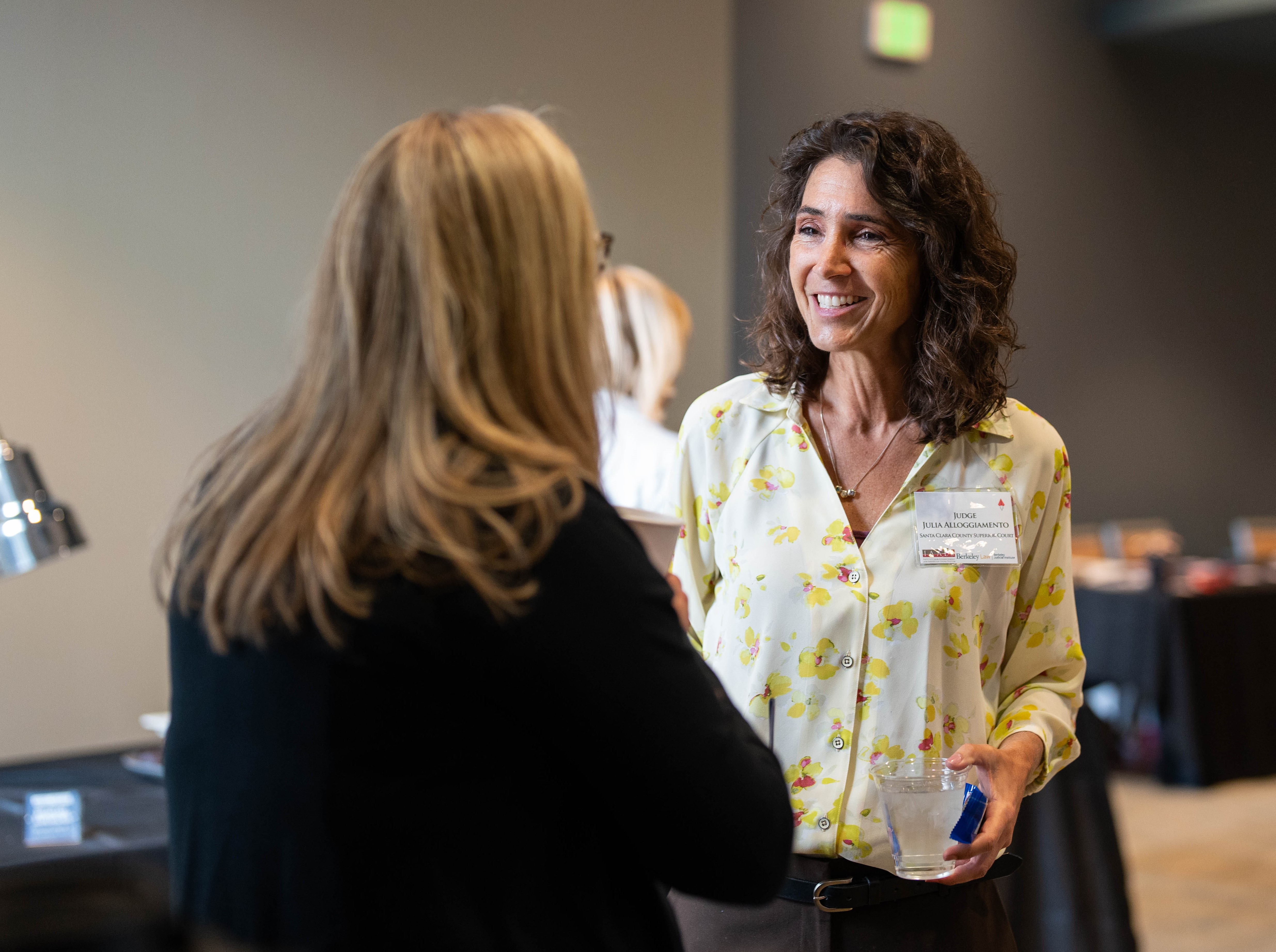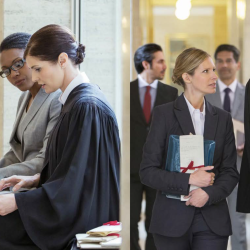Judges Need Strong Communication and Persistence to Lead Innovation
 On November 12, IAALS and the Berkeley Judicial Institute (BJI) hosted Overcoming Resistance and Building Buy-In, a webinar designed to equip judicial leaders with practical tools to proactively address the root causes of resistance when trying to innovate. IAALS CEO Brittany Kauffman was joined by Judge Jennifer D. Bailey (Ret.) and Justice Deno Himonas (Ret.) to share their experiences innovating in their respective courts and what it takes to successfully implement change.
On November 12, IAALS and the Berkeley Judicial Institute (BJI) hosted Overcoming Resistance and Building Buy-In, a webinar designed to equip judicial leaders with practical tools to proactively address the root causes of resistance when trying to innovate. IAALS CEO Brittany Kauffman was joined by Judge Jennifer D. Bailey (Ret.) and Justice Deno Himonas (Ret.) to share their experiences innovating in their respective courts and what it takes to successfully implement change.
The conversation kicked off with how critical communication is to the innovation process. Justice Himonas stressed the importance of listening to the people who go through court processes and gathering their feedback. “To be a good communicator, you really do need to be a good listener,” he said. “These projects that have been successful for us are those that we user-tested in a vigorous way, whether they be digital or analog.”
Emphasizing the importance of communication, Judge Bailey stressed that how judicial leaders communicate their ideas directly impacts how successful the implementation of those ideas will be. To better convey your message as an innovator, Judge Bailey suggests talking in person as often as possible, engaging with those who disagree with you, and pairing data with stories to illustrate your proposed change.
Judge Bailey also shared that courts need to focus on what they have in common, rather than their miniscule differences. This is one of the reasons IAALS and the BJI hosted their National Summit on Judicial Leadership in September 2024: to bring together judicial leaders who otherwise wouldn’t interact with each other to find common solutions. The conversation from that summit continues in this webinar series and in our publication, A Blueprint for Judicial Innovation, which distills insights from the summit and offers concrete guidance for judges who are ready to drive people-centered reform across our justice system.
Technology also has a part to play in the innovation journey. Judge Bailey explained how technology can simplify court processes and free up people to focus on more complex tasks and move cases to resolution. Justice Himonas spoke about how we are at an “inflection point” with technology and AI where courts need to “allow for the benefits of the technological change that is inevitable while protecting against the downsides.”
Perhaps the most significant contributor to innovation is the persistence needed to accomplish it. Judge Bailey and Justice Himonas both talked about the mental fortitude needed to make change happen in a judicial system that is slow to change and prefers the status quo. Justice Himonas warned judicial leaders to expect a long, tedious timeline, but to remain dedicated to seeing the change through. Judge Bailey stressed the importance of recognizing a problem and being proactive in fixing it.
“There is an overwhelming attitude of ‘if it ain’t broke, don’t fix it.’ If you wait until it breaks to fix it, then it’s broken, and you have a disaster of some level on your hands. You’re making emergency fixes instead of designing a solution to a longer-term problem,” said Judge Bailey.
This webinar is the third of six in this series focused on judicial leadership. If you would like to watch the full webinar recording or register for any of the three upcoming free webinars, click here. To learn more about the steps judicial leaders can make now to bring innovation to their courts, read our Blueprint for Judicial Innovation.



